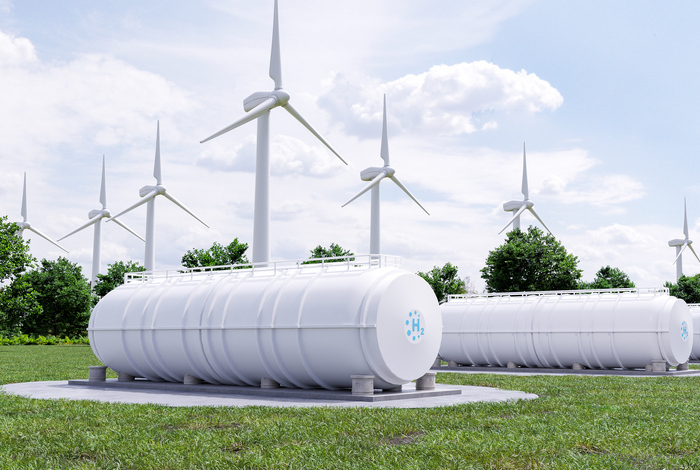Sky debuts hydrogen generators
Sky has announced that it will trial hydrogen generators at its Sky Studios Elstree facility in England, as it looks to cut emissions from studio and on-location shoots. The new system, which has been developed by Sky’s engineers, uses a hybrid hydrogen fuel cell and sodium battery solution to create a reliable, quieter and zero-emission mobile power source, a first of its kind for the industry.
The technology uses green hydrogen and sodium battery systems to generate power, producing only water and heat as by-products. The water is then reused within the fuel cell system, improving efficiency. The sodium batteries also contain no precious or toxic minerals and are safer and more recyclable than lithium alternatives.
“We're so proud to announce this clean-energy power unit - the first of its kind, capable of the biggest production challenges,” said David Rhodes, Executive Chairman of Sky News “Our people have been innovating in the field for more than three decades. Now, we're filling a real gap for smarter, quieter and more sustainable production solutions. We're excited about the trials ahead."[i]
It is hoped that the technology will both reduce pressure on mains power in studio environments, as well as replace traditional diesel generators on location for remote productions.
Sky points to data from the 2020 Screen New Deal[ii] which found that the average ‘tentpole’ film production (a film with a budget of $70 million or more) generates 2840 tonnes of CO2e, the equivalent amount absorbed by 3,709 acres of forest in a year. Within this, transport accounts for approximately 51% of carbon emissions, mains electricity and gas use accounts for 34%, and diesel generators for the remaining 15%[iii].
Sky suggests that their new mobile power unit has the potential to dramatically reduce this footprint, whilst helping improve air quality and reduce noise for crews and local communities.
“This new technology is a brilliant example of how innovation and sustainability can go hand in hand,” added Fiona Ball, Group Director, Bigger Picture and Sustainability at Sky. “We designed it to meet the real needs of production teams while helping us cut emissions and improve air quality. It’s a practical solution that supports our journey to a low-carbon world and shows what’s possible when we embed sustainability into everything we do.”
Hydrogen as a fuel source
Hydrogen is presented as a renewable and clean fuel source given it does not produce harmful emissions at its point of use. Whilst Sky is set to utilise the environmentally sympathetic ‘green hydrogen’, presently most hydrogen production in fact comes from fossil gas.
Termed ‘grey hydrogen’ the fuel is generated from natural gas, or methane, through a process called “steam reforming”[iv]. The process is slightly less harmful than black or brown hydrogen production which uses black (bituminous) or brown (lignite) coal in the hydrogen-making process. The IEA (International Energy Agency) estimates that production of grey hydrogen generates 10-12 Kg of carbon dioxide equivalent (CO2e) emissions for every Kg of hydrogen produced[v].
An alternative to this process is so-called ‘blue hydrogen’, which uses carbon capture to reduce emissions produced from using fossil gas, however this method reportedly fails to capture between 5% and 15% of the CO2 produced. Instead, the most promising (and environmentally sympathetic) extraction method is ‘green hydrogen’, which is produced by splitting water using electricity from renewables, therefore with minimal emissions.
*images courtesy of Sky
References
[i] Sky unveils first of its kind clean power system for film and TV production | Sky Group
[iii] Screen-New-Deal-Report-1.pdf
[iv] Grey, blue, green – the many colours of hydrogen explained | World Economic Forum
[v] GHG emissions of hydrogen and its derivatives – Global Hydrogen Review 2024 – Analysis - IEA




%20(1).jpg)

